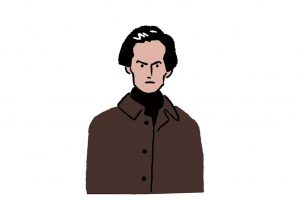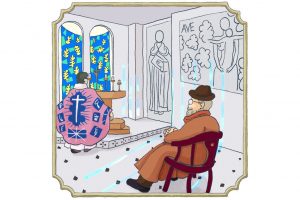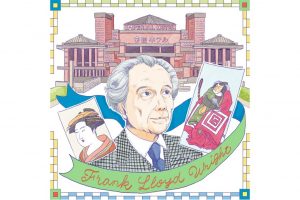Taikan, whose grandfather and father worked as surveyors and cartographers, had intended to pursue the same career path. However, hearing that Tokyo School of Fine Arts, a state-sponsored educational facility for training artists, was to be established, he became interested in a path to become a painter. It was then that he held a Japanese painting brush for the first time, and in 1889, entered the school as part of its first-year class.
Taikan Yokoyama
Examining artists
No.013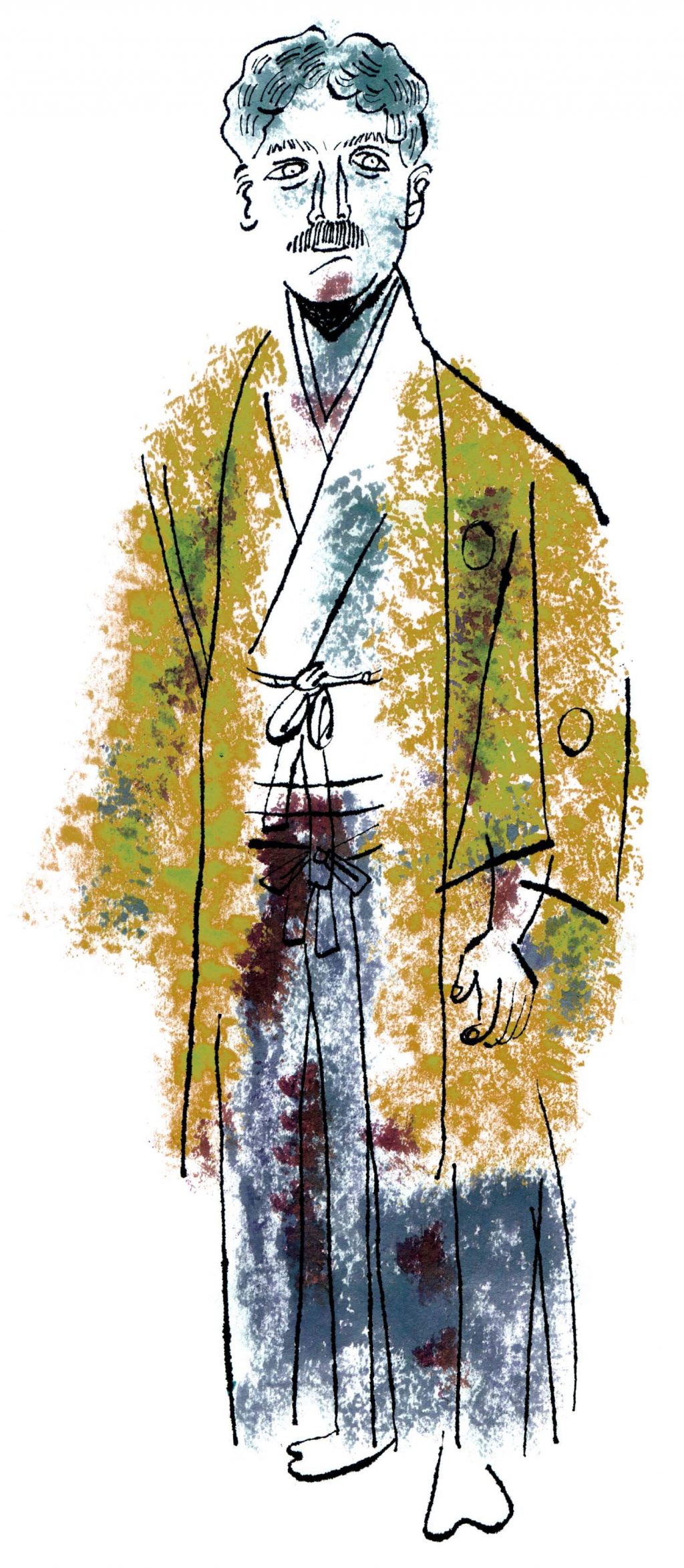
Taikan Yokoyama, a master Japanese painter of modern times, was born at the beginning of Meiji period, and continued through Taisho and Showa periods to struggle between tradition and his own sense of creativity in his constant effort to achieve new expressions in his paintings. He was confronted with numerous conflicts with his teachers and peers, and eventually grew to become a leader in Japan’s art world. Many exhibitions are planning to be hold commemorating his 150th birth year.
Illustration: Sora Toyoshima
Text: Naoko Goda
Taikan Yokoyama (1868-1958)
Born in the first year of Meiji period in Hitachi no Kuni Mito (current Mito City, Ibaraki Prefecture). While learning classical art, he also pursued subjects and styles of expression that were in line his time, and went on to establish his own unique realm of paintings. Some of his many masterpieces include Muga (“Selflessness”), Shoushou Hakkei (“Eight views Hsiao and Hsiang Rivers”), Seisei Ruten (“The Wheel of Life”), and Reihou Hikaku (“Cranes and Mt. Fuji”). He was one of the first recipients of the Order of Culture Award in 1937.
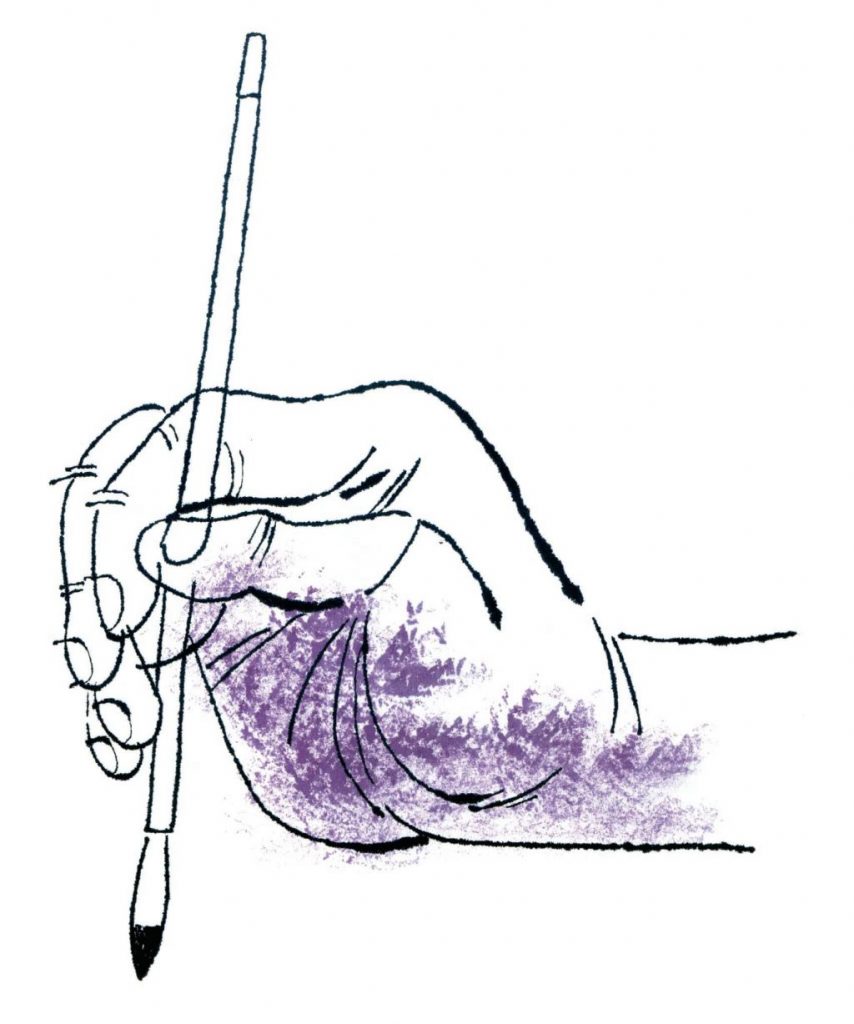

Under the tutelage of the school’s first directer, Okakura Tenshin (1863-1913), Taikan experimented with a technique of expressing light and air without using outlines. Although this style was harshly criticized and called mourou-tai (“blurred style”) within the art world at the time, Taikan, along with Hishida Shunsō (1874-1911) and Shimomura Kanzan (1873-1930), contributed to the innovation of Japanese painting.
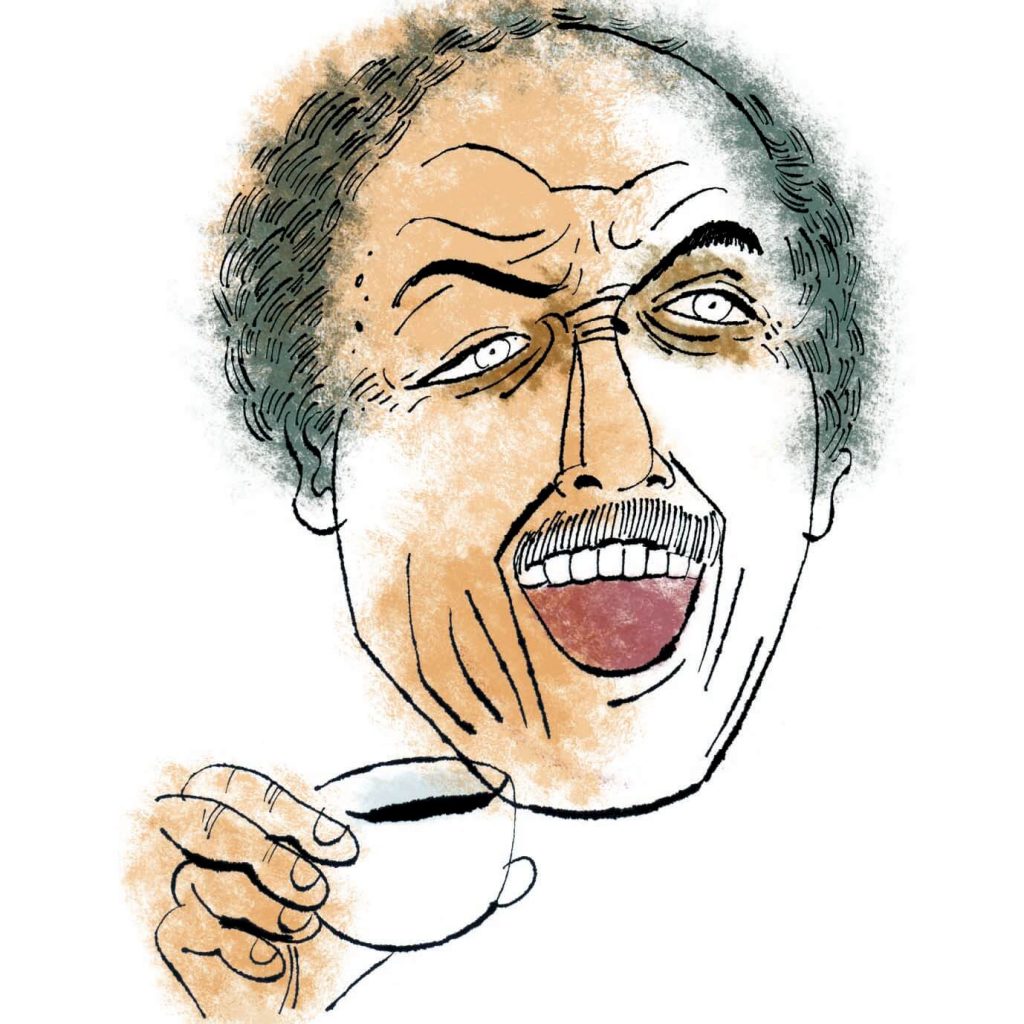
Taikan was known as a big drinker. His three daily meals consisted mainly of sake accompanied by small side dishes. During his prime, he is said to have drunk one sho (1800ml) of sake a day. In 1956, he fell gravely ill, but recovered when he had a sip of sake through a straw. For two years that followed, until his death at age 89, he created a few dozen more paintings.
Editorial supervision by Yokoyama Taikan Memorial Hall
Sora Toyoshima
Illustrator. Born 1980 in Ibaraki Prefecture. Graduated from PALETTE CLUB SCHOOL.
Works with both Japanese and overseas clients, mainly in areas of magazine, advertisement, websites, and apparels.
http://soratoyoshima.net


